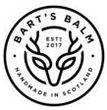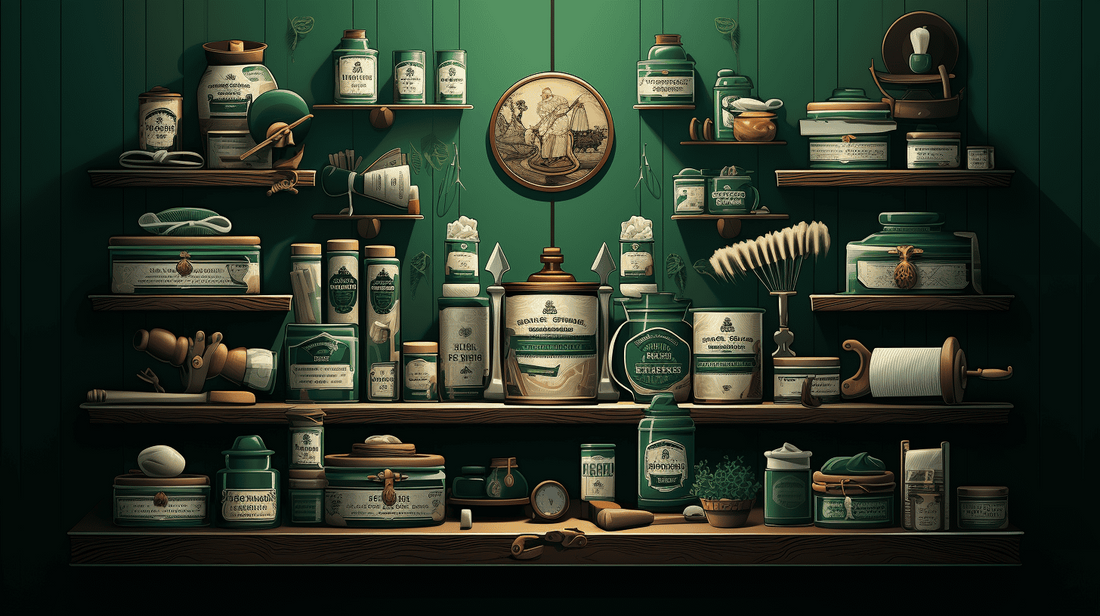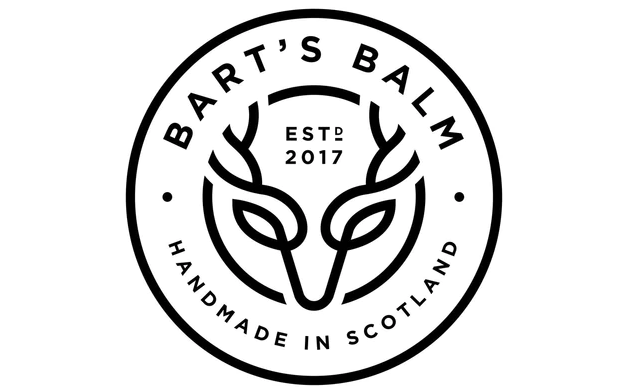Introduction
The artisanal shaving market has evolved from a niche industry into a thriving global phenomenon, driven by consumers’ increasing demand for high-quality, personalized grooming experiences. As 2025 approaches, it becomes evident that this market is not just about functionality but also about craftsmanship, sustainability, and self-care. The rise of artisanal shaving products reflects a broader cultural shift toward valuing authenticity and tradition in a world dominated by mass-produced goods.
From sustainably sourced materials to meticulously crafted tools, the artisanal shaving market appeals to a diverse audience, including both traditional wet shavers and modern grooming enthusiasts. This introduction sets the stage for a closer look at the trends, market segments, and driving forces shaping this growing industry. By understanding the dynamics at play, one can better navigate the artisanal shaving market of 2025 and appreciate its unique blend of heritage and innovation.
The Growing Global Shaving Market
The Growing Global Shaving Market
The shaving industry is undergoing a significant transformation, driven by evolving consumer preferences and advancements in grooming technology. The global shaving market is projected to reach USD 6.27 billion by 2032, reflecting a steady growth trajectory. This expansion is fueled by increasing awareness of personal grooming and the rising demand for innovative shaving products.
Projected Market Growth
According to recent market analysis, the shaving industry is set to experience consistent growth over the next decade. Factors such as the introduction of premium shaving products, the rise of eco-friendly razors, and the growing popularity of subscription-based grooming services are contributing to this upward trend. Consumers are increasingly seeking multi-benefit products that cater to their specific needs, creating opportunities for brands to innovate and expand their offerings.
The Trends in Shaving 2024 further highlight how advancements in technology, such as the integration of AI in grooming devices, are shaping the future of this market. These innovations are not only enhancing the shaving experience but also attracting a broader demographic, including younger consumers who prioritize convenience and sustainability.
Regional Insights
Regionally, North America leads the razor blade market, primarily due to high consumer spending on personal care products and the presence of major grooming brands. The region’s focus on premium and sustainable shaving solutions has set a benchmark for global markets.
Meanwhile, in Hungary, the shaving market is expected to generate USD 51.78 million in 2025, with an annual growth rate of 1.68% from 2025 onwards. This growth is indicative of the increasing adoption of modern shaving practices and the rising demand for high-quality grooming products in the region.
As the global shaving market continues to evolve, brands that prioritize innovation, sustainability, and consumer-centric solutions are likely to thrive. The industry’s future lies in its ability to adapt to changing trends and meet the diverse needs of consumers worldwide.
Emerging Trends in Artisanal Shaving
The world of artisanal shaving is evolving, driven by consumer demand for products that are not only effective but also aligned with modern values. Two key trends are shaping the industry: a strong focus on sustainability and a growing preference for natural ingredients. These shifts reflect a broader movement toward eco-consciousness and skin-friendly formulations in personal care.
Sustainability Focus
Sustainability has become a cornerstone of the artisanal shaving industry. Brands are increasingly adopting eco-friendly practices, from sourcing materials to packaging. Biodegradable packaging, reusable razors, and refillable products are gaining traction as consumers seek to minimize their environmental footprint. This trend is not just about reducing waste but also about creating products that align with a more sustainable lifestyle. By prioritizing sustainability, artisanal shaving brands are appealing to environmentally conscious consumers who value both quality and responsibility.
Natural Ingredients Preference
Another significant trend is the shift toward natural ingredients. Artisanal shaving products are now leveraging natural oils, extracts, and botanicals known for their skin-nourishing properties. Ingredients like shea butter, aloe vera, and the versatile Benefits of Argan Oil are increasingly favored for their ability to soothe, moisturize, and protect the skin during and after shaving. This preference for natural components reflects a growing awareness of the long-term health benefits of avoiding synthetic chemicals. Consumers are choosing products that not only deliver a smooth shave but also enhance their overall skin health.
These emerging trends highlight a broader movement in the personal care industry, where sustainability and natural ingredients are no longer optional but essential. Artisanal shaving brands that embrace these values are well-positioned to meet the evolving needs of modern consumers.
Market Segments and Their Growth
Market Segments and Their Growth
The shaving industry continues to evolve, driven by consumer preferences and technological advancements. Several key market segments are experiencing notable growth, offering opportunities for innovation and investment. Below, we explore the trajectories of the wet shave, razor blade, shaving brush, and straight razor markets, highlighting their potential for expansion.
Wet Shave Market
The wet shave market is projected to grow at a compound annual growth rate (CAGR) of 9.7% from 2025 to 2030. This surge is attributed to the increasing demand for traditional shaving methods that offer a closer and more refined experience. Consumers are gravitating towards wet shaving for its ritualistic appeal and the use of Artisanal Shaving Products, which enhance the overall experience. Additionally, the rise of eco-consciousness is driving the popularity of sustainable and reusable wet shave tools.
Razor Blade Market
The razor blade market is another segment poised for steady growth, with its revenue expected to reach USD 2,425.54 million by 2024. From 2025, the market is forecasted to grow at a CAGR of 1.7%. This growth is fueled by the demand for high-quality, durable blades that cater to both disposable and reusable razor systems. Innovations in blade technology, coupled with the emphasis on precision and comfort, are key factors driving this segment forward.
Shaving Brush Market
Shaving brushes are experiencing a resurgence, with the market set to grow at a CAGR of 14.3% from 2025 to 2032. This growth is driven by the increasing preference for traditional shaving methods and the use of high-quality brushes that create a rich lather. Consumers are also drawn to the aesthetic and functional appeal of shaving brushes, particularly those made from sustainable materials. The integration of shaving brushes with artisanal products further enhances their appeal.
Straight Razor Market
The straight razor market, valued at USD 250 million in 2023, is expected to expand significantly, reaching USD 400 million by 2033. This growth is supported by the rising popularity of vintage and manual shaving tools, which offer a unique and personalized shaving experience. Straight razors are also favored for their durability and ability to provide a clean, precise shave. As more consumers seek long-lasting and eco-friendly solutions, the straight razor market is well-positioned for sustained growth.
Each of these market segments reflects the shifting dynamics of the shaving industry, with a strong emphasis on quality, sustainability, and tradition. The growth trajectories highlight the potential for businesses to innovate and cater to evolving consumer needs, ensuring a robust future for the shaving market.
Driving Factors Behind the Artisanal Shaving Market
Driving Factors Behind the Artisanal Shaving Market
The artisanal shaving market has experienced remarkable growth in recent years, with a compound annual growth rate (CAGR) of 11.8% projected from 2024 to 2025. This surge can be attributed to several key factors that are reshaping the grooming industry and redefining consumer preferences.
One of the primary drivers is the growing consumer interest in traditional shaving methods. As individuals seek alternatives to disposable razors and mass-produced grooming products, they are turning to high-quality, handcrafted shaving tools and accessories. These products often feature premium materials, superior craftsmanship, and a focus on sustainability, appealing to those who value both functionality and aesthetics.
Another significant factor is the increasing demand for luxury grooming experiences. Artisanal shaving products, such as safety razors, straight razors, and natural shaving creams, cater to consumers who view grooming as a ritual rather than a chore. This shift aligns with the broader trend of mindfulness and self-care, where individuals are willing to invest in products that enhance their daily routines.
The Artisanal Shaving Market also benefits from the rise of conscious consumerism. Buyers are becoming more aware of the environmental impact of their purchases, leading them to opt for reusable, durable, and eco-friendly shaving solutions. Artisanal brands often emphasize ethical sourcing, minimal packaging, and long-lasting products, making them a preferred choice for environmentally conscious customers.
Moreover, the artisanal shaving market thrives on its ability to connect with consumers on a personal level. Many brands share their unique stories, craftsmanship techniques, and commitment to quality, fostering a sense of authenticity and trust. This emotional connection resonates with customers, encouraging brand loyalty and word-of-mouth promotion.
As the market continues to expand, it is clear that the combination of tradition, quality, and sustainability will remain pivotal in driving its success. Whether it’s through innovative product offerings or a focus on customer experience, the artisanal shaving market is carving out a significant niche in the global grooming industry.
Conclusion
Conclusion
The artisanal shaving market continues to evolve, driven by consumer demand for sustainability, natural ingredients, and premium experiences. Brands like Bart's Balm exemplify this shift with their handmade, high-quality aftershave balms and pre-shave products crafted in Scotland. As the market grows, these artisanal offerings stand out for their performance, value, and delightful fragrances, making them a trusted choice for shaving enthusiasts worldwide.
Frequently Asked Questions
-
What defines the artisanal shaving market?
The artisanal shaving market is characterized by high-quality, handcrafted shaving products such as razors, brushes, soaps, and creams, often made with natural ingredients and traditional techniques.
-
Why is the artisanal shaving market growing in 2025?
The market is growing due to increasing consumer demand for sustainable, eco-friendly, and premium grooming products, as well as a shift towards traditional and personalized shaving experiences.
-
What are the key trends in the artisanal shaving market for 2025?
Key trends include the rise of eco-conscious brands, the popularity of subscription boxes, the use of organic and natural ingredients, and the resurgence of vintage shaving tools and techniques.
-
How can consumers identify high-quality artisanal shaving products?
Consumers should look for products made with premium materials, natural ingredients, and craftsmanship. Reviews, brand reputation, and certifications for sustainability can also help identify quality products.
-
What are some challenges in the artisanal shaving market in 2025?
Challenges include competition from mass-produced grooming products, maintaining affordability while using high-quality materials, and educating consumers about the benefits of artisanal shaving.






